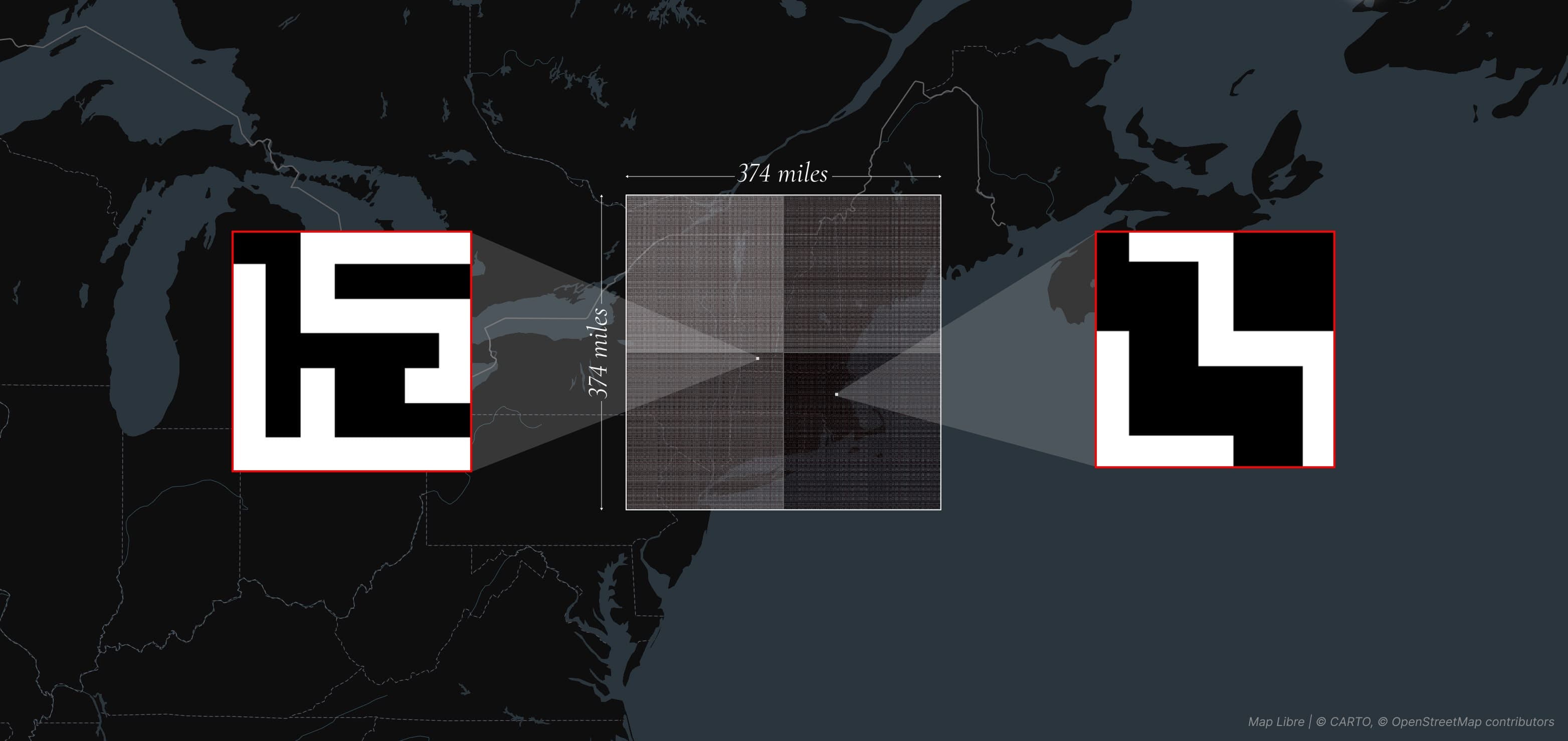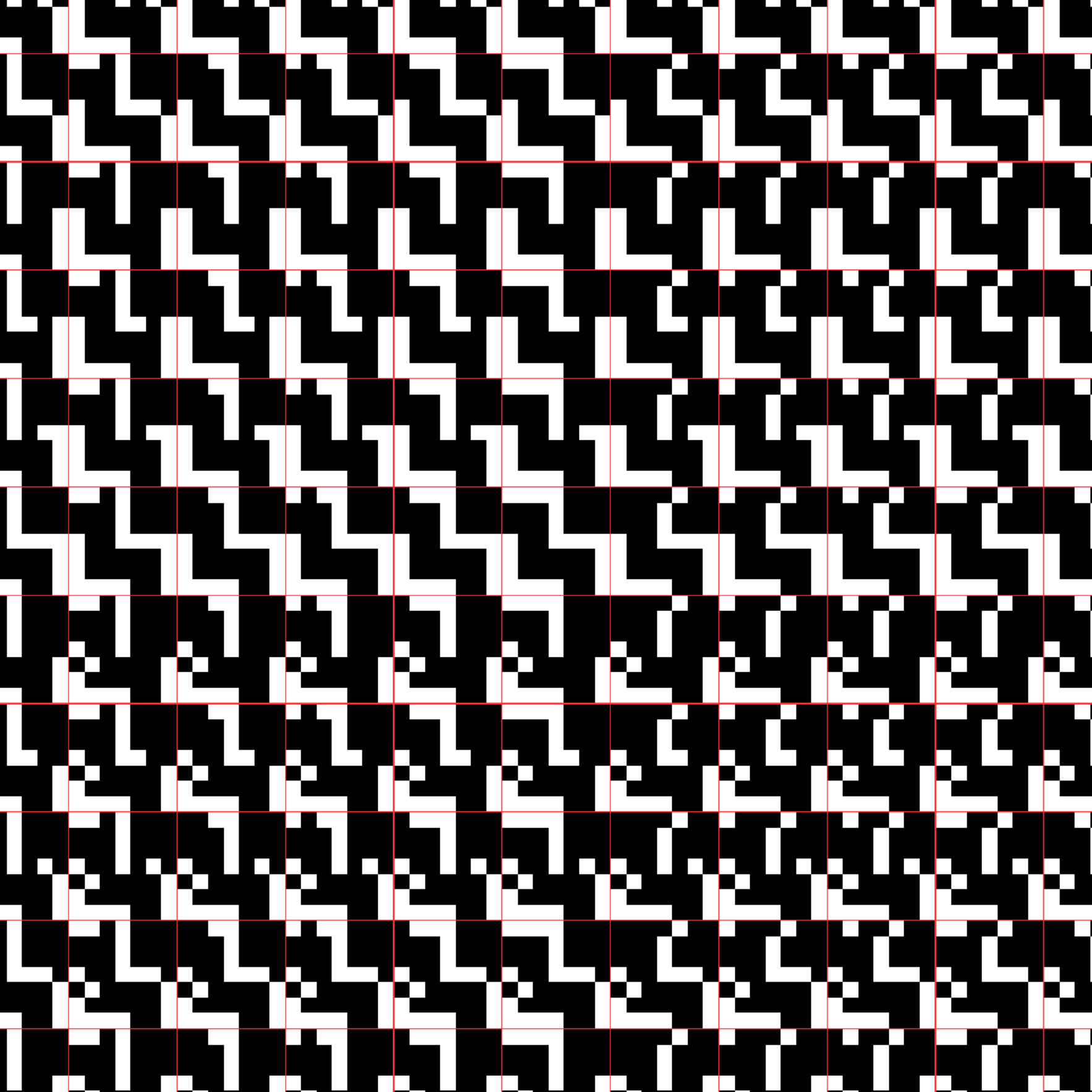Every 7x7 Binary Grid spreads all 562,949,953,421,312 possible 7×7 binary grids across an explorable canvas.
How many different patterns can you make with a square grid of black and white squares? The answer lies in the power of 2, well, depending on the dimensions.
Inspiration
In 1997, John F. Simon Jr.'s Every Icon began stepping through every possible 32x32 grid configuration, 100 pixel flips per second, requiring several hundred trillion years to complete. Almost three decades later, it's still running somewhere in the early rows—a meditation on computational infinity projected through time..
What if instead of waiting, we could navigate that possibility space like a map? A classic space-time tradeoff. Where Simon uses temporal enumeration, Every 7x7 Binary Grid uses spatial distribution. Each pattern lives at specific coordinates, accessible through navigation rather than patience.
If each grid were a 1-inch square tiled on a physical canvas, you'd need a 374-mile by 374-mile square—covering 3.7% of US territory. If we placed the MIT Media Lab logo at its actual location in Cambridge, the Future Sketches logo would land somewhere in Vermont, near Molly Stark State Park.

Navigate, Draw, Teleport
You can navigate the canvas by dragging, like panning through Google Maps. But the space is vast—dragging quickly gets exhausting, even when fully zoomed out.
Alternatively, the drawing panel allows you to sketch any 7×7 pattern and instantly fly to its location. Be it a smiley face, a letter, an abstract doodle, the algorithm calculates its coordinates and teleports you there. It feels as if the pattern are not created, but rather found.
Media Lab's Visual DNA
The 7×7 grid directly references MIT Media Lab's visual identity, designed by Pentagram in 2014. When Michael Bierut's team created unified monograms for the Lab's research groups using a 7x7 grid, they also defined a bounded universe of visual possibilities.
I plotted all 22 current research group glyphs as waypoints in the system. You can pick any group and watch the canvas fly across millions of patterns to land exactly on a familiar logo. Alternatively, you can take an animated tour among all of them.
Wrangling Space with Bits
The canvas uses a quadtree structure—an origin dividing into four quadrants, each recursively subdividing, creating coordinates for ~563 trillion grids across a 23.7 million × 23.7 million grid layout.
Working with browser posed a challenge on precision. WebGL handles only 32-bit numbers, but I need 49 bits to address all grid variations, and even more bits for each pixel. I used the origin shifting technique from game engines to make the entire map addressable.
Every 7x7 Binary Grid quickly becomes a meditation on exhaustive enumeration and the finite nature of computers. This tension makes me wonder about Simon's Every Icon: did that 1997 Java applet account for precision loss over centuries? The counter needs 1,024 bits to reach the final icon. If not, will humanity outlive the software's precision limits to see it crash, or will we vanish from the planet long before it reaches its numerical ceiling?

